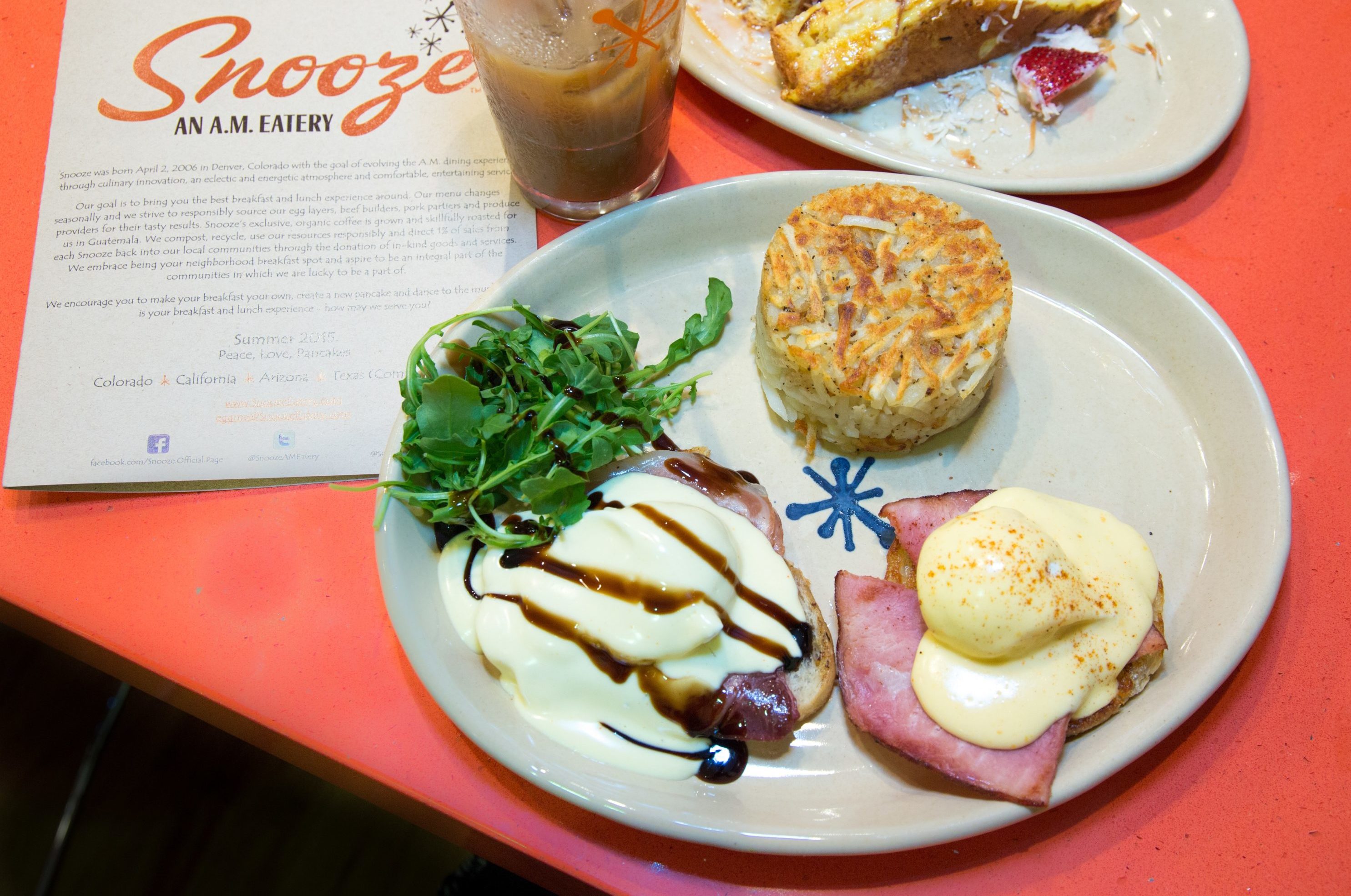This Casual Dining Chain's Growth Strategy Isn't Tied to Loyalty or Delivery

Photo Credit: Technology is increasingly playing an integral part in the customer experience at Snooze. Snooze / Debbie Wolvos
Skift Take
Snooze may not have to extend its store hours beyond the early afternoon to reach new sales heights, but the company knows technology is integral to its growth. So too is a larger footprint.
Sometimes, you just need to focus on what works. While legacy breakfast chains like IHOP and Denny’s work to attract more diners at lunch and dinner times, Snooze, a regional restaurant based in Denver, Colorado, is focusing squarely on the first meal of the day.
Snooze caters to early and late risers alike, with each of its 36 locations operating between the hours of 6:30 a.m. and 2:30 p.m. And unlike other prominent chains in the larger casual dining space, the restaurant is also not keen on delivery or loyalty programs to boost sales, according to CEO David Birzon.
“No one likes the current delivery situation because no one's making any money, and you lose control over the quality of your food,” said Birzon, adding the company continues to take a wait and see approach on delivery. “Loyalty [programs] also often turns into discounting, which is a killer of great economics.”
Snooze is instead focused on the in-house dining experience, serving up specialty breakfast cocktails and classic southern favorites like shrimp and grits and huevos rancheros to hungry diners. The company’s stores average $3 million in each unit's annual sales, Birzon said. He expects the chain to reach 75 locations by the end of 2022.
“We have to earn the right to grow. You're only as good as the last restaurant that you opened,” he said. “But there's a lot of white space, and no one in the breakfast space is doing what we're doing. We really believe that this can be a billion dollar brand.”
In-House Tech
Thirteen-year-old Snooze hasn't completely eschewed technology. The company recently deployed new third-party tableside payment tablets in all of its locations to reduce pain points for customers waiting to check out. Servers now drop off the aforementioned devices when diners ask for the bill, leaving them to pay and leave when ready. It's a strategy especially well-suited to the get-up-and-go breakfast crowd.
“You open it up, and it has your bill sitting right there,” said Birzon. “We actually have reduced our table turnaround times by six minutes with pay at the table, which is unbelievable.”
TableSafe, based in Kirkland, Washington, is powering Snooze's new payment workflow. However, Birzon conceded the company is small, adding Snooze’s, “big fear rolling this out system-wide is that while we think the technology is incredible, until they get more size and scale, if they go out of business, we're in trouble.”
Snooze says it is unlikely to introduce any kind of self-serve ordering technology in the future — such as kiosks and tablets — but the data collected from its existing tech, including tableside payments and its point of sale system, is already paying dividends.
“We love that we can basically track a guest experience from the moment someone walks in the door,” Birzon concluded. “We know how long it took them to get the food. We know when they got up from their table. We can really use that data to drive the experience in a positive way.”
— Additional reporting by Erika Adams
